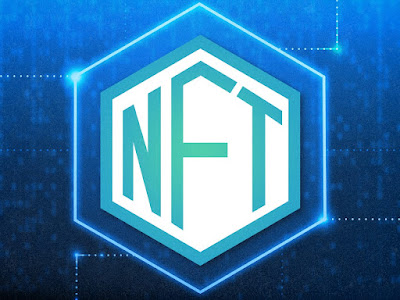உதாரணத்திற்கு `24' படத்தில் வில்லன் சூர்யா ஒரு டைம் மெஷின் வாட்சைத் தேடிக் கொண்டிருப்பார். அப்போது அந்த வாட்ச் போலவே ஒரு விளம்பரம் கொடுத்து, இந்த வாட்சை தேடிக் கண்டுபிடித்து கொண்டு வந்துகொடுத்தால் அவர்களுக்கு 10 கோடி என்று அறிவித்திருப்பார். இதில் பலர், அதே போல வாட்சை டிசைன் செய்து எடுத்துக்கொண்டு வந்திருப்பார்கள். அது எல்லாமே அந்த வாட்சின் டூப்ளிகேட். அதனால் அது Fungible. ஆனால், ஹீரோ சூர்யாவிடம் மட்டுமே உண்மையான டைம் மெஷின் வாட்ச் இருக்கும். அதுதான் Non Fungible.
அந்த ஒரிஜினல் வாட்சை வாங்க வில்லன் சூர்யா எவ்வளவு வேண்டுமானாலும் பணம் கொடுப்பார். எவ்வளவு வேண்டுமானாலும் ரிஸ்க் எடுப்பார். அதே போலத்தான் எந்த ஒரு பொருளின் ஒரிஜினல் மதிப்பு எப்பவுமே எல்லாருக்கும் ஸ்பெஷல்தான். அதை அதிக விலை கொடுத்து வாங்க யாராவது தயாராக இருப்பார்கள். ஆனால், அதை நேரடியாக பிசிக்கலாக (physical format) வாங்காமல் இ-ஃபார்மேட்டில் (e-format) வாங்கினால், அதுதான் டோக்கன்.
உதாரணமாக, மோனாலிஸா புகைப்படம் மிகவும் விலை மதிப்பு மிக்கது. அதன் உரிமையை நான் 10 கோடி கொடுத்து வாங்குகிறேன் என்று வைத்துக்கொள்வோம். இப்போது அந்த புகைப்படம் பலரிடம் இருக்கும். ஆனால், அதனுடைய உரிமை (ownership) என்னிடம் மட்டும்தான் இருக்கும். நான் அந்தப் படத்தின் உரிமையாளர் என்று ப்ளாக்செயினில் பதிவாகி இருக்கும். அதை யார் வேண்டுமானாலும் எப்போது வேண்டுமானாலும் பார்த்துக்கொள்ளலாம். ஆனால், பயன்படுத்த முடியாது. அப்படி பயன்படுத்தினால், அதற்குச் சொந்தக்காரன் என்கிற முறையில் எனக்குக் கட்டணம் செலுத்த வேண்டும்.
கடந்த சில மாதங்களுக்கு முன்பு பீபிள் (Beeple) நிறுவனத்தின் 5000 புகைப்படங்கள் அடங்கிய டிஜிட்டல் ஆர்ட் (digital art) ஒன்று 500 கோடிக்கு விற்பனையானது. அதே போல, டிவிட்டர் நிறுவனத்தின் நிறுவனர் ஜாக் டார்ஸியின் முதல் ட்வீட் 2.9 மில்லியன் டாலருக்கு விற்பனையானது.
என்.எஃப்.டி குறித்து பாடிய ஒரு பாட்டை என்.எஃப்.டி-யிலேயே விற்றார் எலான் மஸ்க். இந்த என்.எஃப்.டியைப் பொறுத்தவரை, எது வேண்டுமானாலும் விலை போகும், அதற்கான மதிப்பு இருக்கிறதா, இல்லையா என்பதை எல்லாம் தாண்டி. உதாரணமாக, ஒரு பாகிஸ்தான் மீம் 51,530 டாலருக்கு விலை போனது. ஆனால், அது வெறும் ஒரு மீம் தான். அதே போல, நியான் கேட் (Nyan cat) எனும் மீம் வீடியோ 4 கோடி டாலருக்கு விற்பனை ஆகியுள்ளது.
ஒரு பாட்டு அல்லது மீம் அல்லது ஒரு படைப்பு இந்த அளவுக்கு விலை போவதை எப்படிப் புரிந்துகொள்வது என்று கேட்கிறீர்களா? இதோ இந்த விளக்கத்தை அவசியம் படியுங்கள்.
பொதுவாக, பொருளாதாரத்தில் மூன்று விதமான பொருள்கள் உள்ளன. Normal Goods, Giffen Goods, Veblen Goods என்பதே அந்த மூன்று வகை பொருள்கள். இதில் நார்மல் குட்ஸ் என்பவற்றின் விலை ( price ) அதிகரிக்கும்போது தேவை (demand) குறையும். தக்காளி விலை ஒரு கிலோ ரூ.100 எனில், ஒரு கிலோ வாங்குவதற்கு பதில் அரை அல்லது கால் கிலோ வாங்குவது இதற்கு உதாரணம்.
ஆனால் Giffen மற்றும் Veblen goods-யைப் பொருத்தவரை விலை (price) அதிகமானாலும் தேவை (demand) குறையாது. இதற்கு உதாரணமாக, அரிசி அல்லது தண்ணீரை சொல்லலாம். அரிசி விலை அதிகரித்தாலும், நாம் சாப்பிடுவதற்காக அதை வாங்குவது குறைவதே இல்லை.
Veblen goods என்பவை ஆடம்பர பொருள்களில் அடங்கும். உதாரணமாக, ரோலக்ஸ் வாட்ச். இதன் விலை எவ்வளவுதான் ஏறினாலும், அதை வாங்குபவர்கள் வாங்கிக்கொண்டுதான் இருப்பார்கள். அதே போலத்தான் என்.எஃப்.டி.யும்.
இதன் விலை என்னதான் பொருளின் மதிப்பைவிட ஆயிரம் மடங்கு அதிகமானாலும் ஒரு குறிப்பிட்ட மக்கள் இதை வாங்கிக் கொண்டுதான் இருப்பார்கள். அதனால் இதற்கு Demand அதிகமாகிக் கொண்டே போகிறது. அதனால் விலையும், மதிப்புமே அதிகரிக்கிறது.
என்.எஃப்.டி என்பது இந்த மூன்று வகையிலும் வரக்கூடிய ஒரு வஸ்து என்றே சொல்லலாம். ஆனாலும், என்.எஃப்.டி.யின் விலை பெருமளவில் சரிய அதிக வாய்ப்புள்ளது என அதில் பணம் சம்பாதித்த பீப்ஸ் நிறுவன இயக்குநரே சொல்கிறார்.
இந்த என்.எஃப்.டி பெரும்பாலும் பணம் அதிகம் உள்ளவர்கள் செய்யும் அவசியமில்லா முதலீடு போல கருதப்பட்டது. ஆனால் நாளடைவில் எல்லாரும் என்.எஃப்.டி-யில் களமிறங்க, சாதாரண மக்களும் தற்போது இதில் ஆர்வம் காட்டத் துவங்கியுள்ளனர். ஒரு நாள் மக்கள் இதை வாங்குவதை நிறுத்திவிட்டால் என்.எஃப்.டி-யின் தேவை கண்டிப்பாக குறைந்து, விலையும் குறையும் என்பதில் சந்தேகம் இல்லை.
ஆனால், இந்தியாவில் தற்போது சினிமா நட்சத்திரங்கள் மூலம் காலடி எடுத்துவைத்துள்ள என்.எஃப்.டி-க்கு மற்ற நாடுகளை போல வரவேற்பு கிடைக்குமா என்பதைப் பொறுத்திருந்துதான் பார்க்க வேண்டும்.








